These are just a few songs that might surprise you, this music has been popular for centuries and these songs from the 40s and 50s are only modern updates to timeless themes of human relationships and life. Johnny Cash was singing a 1947 song that was actually taken from an older song when he sang Cocaine Blues , it isn't from the 60s or 70s.
The song "Cocaine Blues" that Johnny Cash sang was written in 1947 and it came from the song "Little Sadie" dating from at least 1922. WM
"Cocaine Blues" is a Western Swing song written by TJ Arnall, a reworking of the traditional song "Little Sadie". This song was originally recorded by Roy Hogsed May 25, 1947, at Universal Recorders in Hollywood, California. It was released on Coast and Capitol, with the Capitol release reaching #15 in 1948.
"Cocaine Blues"
Woody Guthrie "Little Sadie"
http://www.youtube.com/watch?v=CRNitefBKwI
"Little Sadie" is a 20th Century American folk ballad. It is also known variously as "Bad Lee Brown", "Cocaine Blues", "Transfusion Blues", "East St. Louis Blues", "Late One Night", "Penitentiary Blues" and other titles. It tells the story of a man who is apprehended after shooting his wife/girlfriend. He is then sentenced by a judge.
The earliest written record of the song dates from 1922 the lyric fragment below, transcribed in Joplin, Missouri, is noted in the 1948 book Ozark Folksongs, Vol. II,
"Bad Lee Brown"
Last night I was a-makin' my rounds,
Met my old woman an' I blowed her down,
I went on home to go to bed,
Put my old cannon right under my head.
Jury says murder in the first degree,
I says oh Lord, have mercy on me!
Old Judge White picks up his pen,
Says you'll never kill no woman ag'in.
Some versions refer to the Sheriff of Thomasville, North Carolina apprehending the murderer in Jericho, South Carolina (Jericho is in Charleston County, near Hollywood, South Carolina). Other versions transpose Juarez, Mexico for Jericho.
In the first sound recording (the 1930 recording by Clarence "Tom" Ashley, referenced below), Little Sadie seems to have been a prostitute:
I woke next morning 'bout half past nine,
The buggies and the hacks all (swarmed?) in line,
The pimps and the gamblers all standing around,
They're gonna take Sadie to the burying ground
Johnny Paycheck - Pardon Me, I've Got Someone to Kill 1966
Songs of this type are a permanent part of culture, some that are still currently popular such as "Knoxville Girl" were first popular 400 years ago.
Children As Victims in Murder Ballads:
Murder stories involving children have been very popular in musical literature. While mothers are generally portrayed as gentle and kind, there are songs that portray their violent side. Feticide/ infanticide may be found in "Mary Hamilton" and "The Cruel Mother" (also known as "Down by the Greenwood Sidie"), and rejection/neglect is delineated in "Lady Gay" ("The Wife of Usher's Well").
Drunken fathers are factors in songs like "The Drunkard's Child." "Little Blossom" goes to the bar to find her father and in a drunken rage he murders her. Poisoning is the variable in death for "Lord Randall." Revenge against the father for failure to pay a debt leads to the murder of his son in "Lamkin."
Several of the child murder ballads popular in America were transplanted from Europe. Sir Hugh tells the story of a little boy murdered by a Jew's daughter, and "Dunbar the Murderer" is the tale of a man who murders two children left in his care by the parents. However, most child murder ballads are original to the United States. Surprisingly, sensational cases, such as the murder of fourteen-yearold Bobby Franks by Nathan Leopold and Richard Loeb on May 21, 1924, and the murder and cannibalism of Grace Budd by Albert Fish in the 1930s, never made their way into musical literature. However, the killing of "Little Mary Phagan" at the pencil factory where she worked in 1913, the murder and beheading of "Little Marian Parker" on December 14, 1927, and the kidnapping and murder of the Lindbergh baby in 1932 were popularized in the media, commercial records, and folk music. Mass murders such as the "Ashland Tragedy" in 1883 (two children and a neighbor in Ashland, Kentucky, were murdered and the bodies burned) and the "Murder of the Lawson Family" (the father killed his wife, six children, and himself) made their way into the folk music tradition. Here is a link to a description of Lamkin, it is a brutal song about killing a child and a woman because of an unpaid debt http://en.wikipedia.org/wiki/Lamkin Here it is put to music, http://www.youtube.com/watch?v=YVzsWVuDMm0&feature=related
Women As Victims in Murder Ballads :
The common theme in ballads involving the murder of women is the luring of the woman by the man to the place of her demise under false pretenses. Most of the songs are English ballads or altered forms of English ballads.
The victim dies when she refuses to marry her murderer in "Banks of the Ohio" and "Poor Ellen Smith." Money appears to be a factor in "Down in the Willow Garden" (also known as "Rose Connelly"). Jealousy on the part of the killer is extant in songs like "Lord Thomas and Fair Eleanor" (the name of the woman changes with the singer). Pregnancy sometimes exists as a variable. For example, when Scott Jackson and a fellow dental student murdered Pearl Bryan at Fort Thomas, Kentucky, in 1896, both pregnancy and jealousy were factors. Jonathan Lewis drowned "Omie Wise" in Deep River in 1888 for dual reasons: She was pregnant and he preferred a local girl. "Knoxville Girl," a British broadside (single-sheet ballads sold for a penny or half-penny on the streets of towns and villages around Britain between the sixteenth and early twentieth centuries) written in the early 1700s, contains some of the most violent lyrics in any folk song.
http://www.youtube.com/watch?v=ZwXa1owy58o&feature=related
Men As Victims in Murder Ballads :
Few songs feature the murder of a man by a woman. Outstanding are the English ballad "Young Hunting" (known in America as "Loving Henry" and "Lord Henry and Lady Margaret") and American ballads such as "Frankie and Albert" (also known as "Frankie and Johnny") and "Frankie Silvers." In all these songs the homicide is the result of jealousy.
Men kill men for many reasons and under varied circumstances in folk songs. There are heroes (e.g., "Pretty Boy Floyd" and "Jesse James") and anti-heroes such as "Stagger Lee." Murder may be committed for wanton cruelty or economic remuneration. An act of homicide may involve the killing of one man ("Jesse James") or many ("The Golden Vanity"). The killing can be the result of jealousy and/or hatred. Whether the song is simply to tell a story or entertain, it is popularized and transmitted from generation to generation. Johnny Cash 1959 Folsum Prison Blues (killing a man just to watch him die, that ain't poodle skirts and bobby socks, baby!) http://www.youtube.com/watch?v=i1xSt7iganA
The song "Cocaine Blues" that Johnny Cash sang was written in 1947 and it came from the song "Little Sadie" dating from at least 1922. WM
"Cocaine Blues" is a Western Swing song written by TJ Arnall, a reworking of the traditional song "Little Sadie". This song was originally recorded by Roy Hogsed May 25, 1947, at Universal Recorders in Hollywood, California. It was released on Coast and Capitol, with the Capitol release reaching #15 in 1948.
"Cocaine Blues"
Woody Guthrie "Little Sadie"
http://www.youtube.com/watch?v=CRNitefBKwI
"Little Sadie" is a 20th Century American folk ballad. It is also known variously as "Bad Lee Brown", "Cocaine Blues", "Transfusion Blues", "East St. Louis Blues", "Late One Night", "Penitentiary Blues" and other titles. It tells the story of a man who is apprehended after shooting his wife/girlfriend. He is then sentenced by a judge.
The earliest written record of the song dates from 1922 the lyric fragment below, transcribed in Joplin, Missouri, is noted in the 1948 book Ozark Folksongs, Vol. II,
"Bad Lee Brown"
Last night I was a-makin' my rounds,
Met my old woman an' I blowed her down,
I went on home to go to bed,
Put my old cannon right under my head.
Jury says murder in the first degree,
I says oh Lord, have mercy on me!
Old Judge White picks up his pen,
Says you'll never kill no woman ag'in.
Some versions refer to the Sheriff of Thomasville, North Carolina apprehending the murderer in Jericho, South Carolina (Jericho is in Charleston County, near Hollywood, South Carolina). Other versions transpose Juarez, Mexico for Jericho.
In the first sound recording (the 1930 recording by Clarence "Tom" Ashley, referenced below), Little Sadie seems to have been a prostitute:
I woke next morning 'bout half past nine,
The buggies and the hacks all (swarmed?) in line,
The pimps and the gamblers all standing around,
They're gonna take Sadie to the burying ground
Johnny Paycheck - Pardon Me, I've Got Someone to Kill 1966
Songs of this type are a permanent part of culture, some that are still currently popular such as "Knoxville Girl" were first popular 400 years ago.
Children As Victims in Murder Ballads:
Murder stories involving children have been very popular in musical literature. While mothers are generally portrayed as gentle and kind, there are songs that portray their violent side. Feticide/ infanticide may be found in "Mary Hamilton" and "The Cruel Mother" (also known as "Down by the Greenwood Sidie"), and rejection/neglect is delineated in "Lady Gay" ("The Wife of Usher's Well").
Drunken fathers are factors in songs like "The Drunkard's Child." "Little Blossom" goes to the bar to find her father and in a drunken rage he murders her. Poisoning is the variable in death for "Lord Randall." Revenge against the father for failure to pay a debt leads to the murder of his son in "Lamkin."
Several of the child murder ballads popular in America were transplanted from Europe. Sir Hugh tells the story of a little boy murdered by a Jew's daughter, and "Dunbar the Murderer" is the tale of a man who murders two children left in his care by the parents. However, most child murder ballads are original to the United States. Surprisingly, sensational cases, such as the murder of fourteen-yearold Bobby Franks by Nathan Leopold and Richard Loeb on May 21, 1924, and the murder and cannibalism of Grace Budd by Albert Fish in the 1930s, never made their way into musical literature. However, the killing of "Little Mary Phagan" at the pencil factory where she worked in 1913, the murder and beheading of "Little Marian Parker" on December 14, 1927, and the kidnapping and murder of the Lindbergh baby in 1932 were popularized in the media, commercial records, and folk music. Mass murders such as the "Ashland Tragedy" in 1883 (two children and a neighbor in Ashland, Kentucky, were murdered and the bodies burned) and the "Murder of the Lawson Family" (the father killed his wife, six children, and himself) made their way into the folk music tradition. Here is a link to a description of Lamkin, it is a brutal song about killing a child and a woman because of an unpaid debt http://en.wikipedia.org/wiki/Lamkin Here it is put to music, http://www.youtube.com/watch?v=YVzsWVuDMm0&feature=related
Women As Victims in Murder Ballads :
The common theme in ballads involving the murder of women is the luring of the woman by the man to the place of her demise under false pretenses. Most of the songs are English ballads or altered forms of English ballads.
The victim dies when she refuses to marry her murderer in "Banks of the Ohio" and "Poor Ellen Smith." Money appears to be a factor in "Down in the Willow Garden" (also known as "Rose Connelly"). Jealousy on the part of the killer is extant in songs like "Lord Thomas and Fair Eleanor" (the name of the woman changes with the singer). Pregnancy sometimes exists as a variable. For example, when Scott Jackson and a fellow dental student murdered Pearl Bryan at Fort Thomas, Kentucky, in 1896, both pregnancy and jealousy were factors. Jonathan Lewis drowned "Omie Wise" in Deep River in 1888 for dual reasons: She was pregnant and he preferred a local girl. "Knoxville Girl," a British broadside (single-sheet ballads sold for a penny or half-penny on the streets of towns and villages around Britain between the sixteenth and early twentieth centuries) written in the early 1700s, contains some of the most violent lyrics in any folk song.
http://www.youtube.com/watch?v=ZwXa1owy58o&feature=related
Men As Victims in Murder Ballads :
Few songs feature the murder of a man by a woman. Outstanding are the English ballad "Young Hunting" (known in America as "Loving Henry" and "Lord Henry and Lady Margaret") and American ballads such as "Frankie and Albert" (also known as "Frankie and Johnny") and "Frankie Silvers." In all these songs the homicide is the result of jealousy.
Men kill men for many reasons and under varied circumstances in folk songs. There are heroes (e.g., "Pretty Boy Floyd" and "Jesse James") and anti-heroes such as "Stagger Lee." Murder may be committed for wanton cruelty or economic remuneration. An act of homicide may involve the killing of one man ("Jesse James") or many ("The Golden Vanity"). The killing can be the result of jealousy and/or hatred. Whether the song is simply to tell a story or entertain, it is popularized and transmitted from generation to generation. Johnny Cash 1959 Folsum Prison Blues (killing a man just to watch him die, that ain't poodle skirts and bobby socks, baby!) http://www.youtube.com/watch?v=i1xSt7iganA


















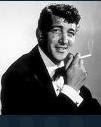

















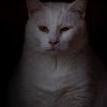


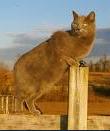




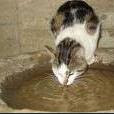





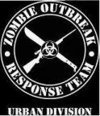







No comments:
Post a Comment